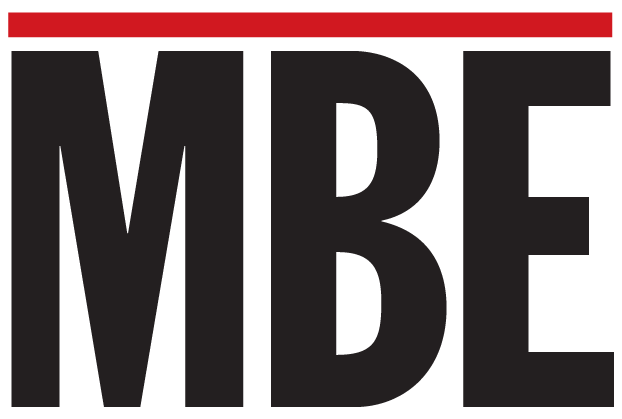
BCH’s AMEN Corner – Affluent Minority Entrepreneur News
As a business owner, many of you may be counting on your business to provide a comfortable retirement in your golden years. Why that is a viable plan; don’t forget about funding your workplace retirement account as a solid supplementary option. As tempting as it might be to just focus on growing your business, never have all your retirement funds in one basket. The desire to reinvest working capital back in your business is appealing and sometimes necessary; however, diversification of retirement sources is just as important and prudent as the world and economy are unpredictable and fluid. Strive to strike the right balance.
That said, if business owners have a retirement account, this is typically the time of year when they slow down long enough to look at their contributions only to realize that they might need to play a little catch up to meet retirement goals. If you find yourself in this position, there are some strategies you can employ.
Self-Employed Business Owners
You have the ability to contribute up to 25 percent of your net earnings after taxes, with a maximum annual contribution limit of $69,000 in 2024. This is made possible by combining both participating employee and employer portions. Working with your CPA and predicated on your business structure, employer contributions can range from 20 percent to 25 percent of the owner’s compensation. However, total contributions—including both employee and employer amounts—cannot exceed 100 percent of the participant’s compensation or $55,000, for instance, an employee making $40,000 cannot have contributions above that number. This will provide flexibility to tailor contributions according to income and tax planning needs. This structure makes solo 401(k)s a robust option for maximizing tax-deferred savings.
Catch Up
If you are 50 years of age or older, you can contribute an additional $7,500 this year in your 401(k), 403(b), most 457 plans, and the federal government’s TSP (Thrift Savings Plan). This can provide a great way to add to your retirement investments while receiving more tax savings.
Year-End Bonuses
As you determine year-end company bonuses, consider directing a portion, or all of it, to your retirement plan. Most payroll companies can accommodate a one-time injection outside of systematic payroll retirement contributions. Crunch the numbers and squeeze out as much as you can. The time value of money is real. Each day and year that passes are a day and year that could result in building more wealth over time. The one thing you can’t get back is time.
Extended Timeframe
The IRS will allow you to make contributions until April 15, 2025, for the 2024 tax year. Therefore, your runway to add contributions goes beyond December 31. Take advantage of the extra time using income from Q1 2025.
Auto Contributions
Many investment management companies are auto enrolling new employees into workplace retirement plans at a level of one percent and will increase contributions by one percent each year for existing employees. This provides a painless and thoughtless way of increasing contributions, and your retirement funds each year. In many cases, annual salary increases will fund the one percent. Of note, employees have the ability to opt out of auto increases at any time.
Workplace Retirement Accounts
If you don’t have a workplace retirement account, this is the time to consider establishing one even if you are a sole proprietor. Most plans will allow you to contribute a maximum of $23,000 or $30,500 for individuals 50+ years old vs. an IRA which limits you to $7,000 or $8,000 for individuals 50+ years old. The fees to launch and maintain a retirement plan for small businesses are much more affordable than previous years. In addition, the investment firm takes care of all the administrative requirements. Being able to invest more today will definitely help to secure a solid retirement. It is noteworthy to mention that some retirement plans allow for even higher contribution limits based on the type of business entity. Do your research and check it out.
As stated earlier, retirement diversification is extremely important. Just think about your business, if you don’t have more than one product or service, speaking from one business owner to another, we are sure that it is in your long-term plan to do so. Relying on limited products or services can lead to instability and vulnerability for your business and financial future. However, if you are counting on your business to fund your retirement, and if it is challenging to add a new product or service at this time, you can easily diversify your retirement sources by investing in your retirement plan. It is easy and does not require ongoing expenses to maintain it.
Here’s an example of the power of your workplace plan. If you invest the maximum of $23,000 for the next ten years earning an average annual return of 11 percent (lower than the S&P 500 Index), you would have contributed $230,000 out-of-pocket and your account would be worth $426,912.89. This amount is earned without having to inject one more dime (as you would have to in your business). Just set it and forget it! Again, this is just a supplement investment to the value of your business. An added benefit is the fact that the more you invest, the more you can earn. As a disclaimer, history is not an indication of future results in the market, and we can say the same about your business and related industries. You don’t know what the future will hold; you can only rely on past results and projections. But, as a risktaker, this is the risk you were born to take with every fiber in your being. Let’s go!
For more information and useful tips for entrepreneurs and to increase your net worth, check us out on our YouTube channel.













